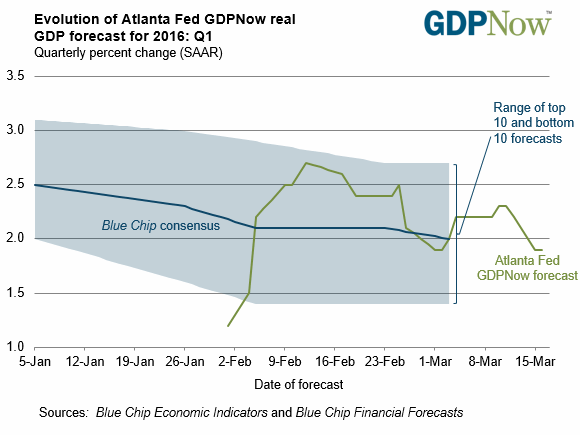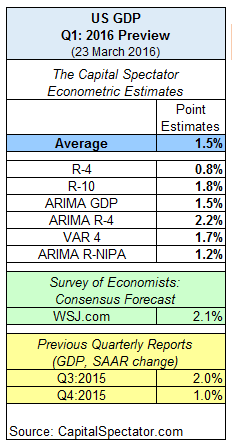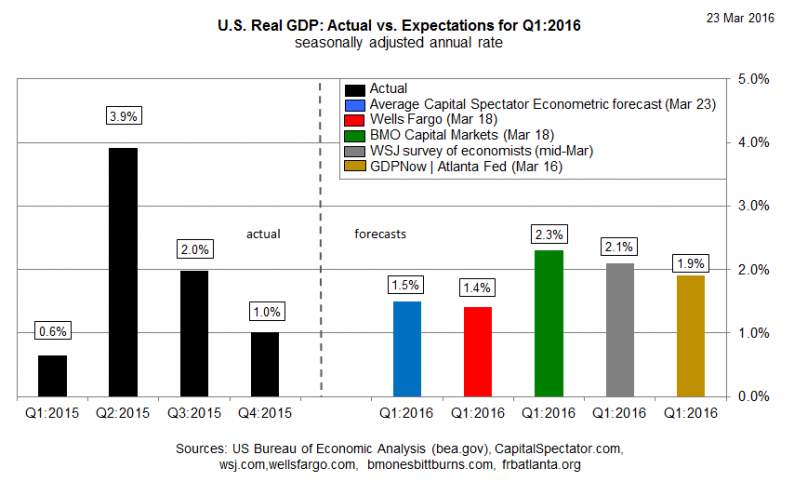The US economy is widely expected to post modestly faster growth in this year’s first quarter vs. the weak 1.0% GDP rise in last year’s Q4 (based on seasonally adjusted annual rates). The projected improvement still looks unimpressive, but the good news is that analysts continue to forecast a slightly faster expansion for the “advance” Q1 GDP report that the Bureau of Economic Analysis will publish on Apr. 28.
One of the more optimistic estimates (as of Mar. 18) comes from BMO Capital Markets, which predicts a 2.3% rise in Q1 GDP—more than double the rate in last year’s Q4. But that’s an outlier on the upside relative to the crowd’s view. The Wall Street Journal’s survey data for this month points to a 2.1% advance for first-quarter output, based on the average estimate for economists.

The Atlanta Fed’s GDPNow model is currently projecting Q1 growth of only 1.9% (as of Mar. 16), which reflects a modest downgrade relative to estimates in recent weeks. Meanwhile, The Capital Spectator’s average econometric estimate for Q1 is 1.5%. That’s fractionally above last month’s 1.4% estimate, but a tepid projection nonetheless.

Markit Economics yesterday advised that the weak survey numbers for US manufacturing in March, combined with a downturn in the services purchasing managers’ index (PMI) for February (the March update is due on Thursday), hints at weak growth generally. “The survey data are pointing to very modest GDP growth in the first quarter,” Markit’s chief economist, Chris Williamson, said. “Hopes are therefore pinned on a rise in Thursday’s services flash PMI for March to reassure that the economy is not completely stalling.”
Meantime, here are the various forecasts that are used to calculate CapitalSpectator.com’s average estimate:

As updated estimates are published, based on incoming economic data, the chart below tracks the changes in the evolution of The Capital Spectator’s projections.











Leave A Comment